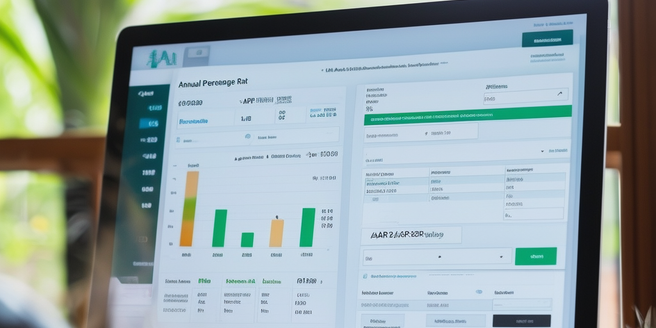
Explaining APR: The Basics and Beyond
APR, or annual percentage rate, encompasses the total cost of borrowing money annually, including not just the raw interest rate but also any fees associated with the borrowing process. It’s a crucial term that aids consumers in comparing different credit products in an apples-to-apples manner, thereby empowering them to make better financial decisions. Understanding the APR associated with your credit card is crucial as it impacts the total debt you owe, hence, knowing your card’s APR could alleviate potential financial strain and keep costs under control. So, it’s imperative not to overlook the APR in any form of borrowing, especially when managing your credit card.
Different Types of APR Explained: Purchase, Balance Transfer, and Cash Advance APR
Annual Percentage Rates (APRs) vary for different types of credit card transactions and can significantly impact your borrowing cost. The purchase APR is applied if the balance for card purchases isn’t fully paid, and cardholders usually get a grace period. The balance transfer APR is higher and applies when transferring debt from one card to another. The cash advance APR applies instantly when you withdraw cash via credit card and is often the most expensive. All these rates depend on creditworthiness – a good score lowers your APRs, while a less than perfect one might increase them. Understanding APR types is crucial in managing credit card usage to avoid unnecessary debt.
How Your Credit Card Interest Rate is Calculated
Credit card interest rates are greatly influenced by the Prime Rate, a benchmark interest rate dictated and regulated by banks, which guides most other interest rates in the country. It’s the rate at which banks lend to their most creditworthy customers and many rates, including credit card ones, heavily rely on its shifts. However, your specific credit card interest rate depends not only on the Prime Rate and personal factors like your creditworthiness, evaluated based on your financial history and ability to repay debts. If perceived as a high-risk borrower due to a pattern of late payments or loan defaults, your credit card interest rate could be higher. Conversely, a clean credit record and a solid repayment history could earn you a lower interest rate. Therefore, understanding the interest rate being offered, how it might change over time and impact future payments is critical before accepting any credit card offer. This knowledge could potentially save you from high interest costs, preserving your credit score.
Understanding Monthly and Daily Periodic Rates: Unveiling the Math Behind APR
The Annual Percentage Rate (APR) is often given as a yearly rate, which may not clearly show the daily interest you’re paying. To clarify this, credit card companies usually calculate your interest using the daily periodic rate (DPR). This takes the APR and divides it by 365, the total number of days in a year. Another method used is the monthly periodic rate, dividing the APR by 12, the number of months in a year. These rates give a detailed view of your interest, enabling you to fully comprehend how much you’re paying. As a result, you can make informed decisions about credit card usage, helping to better manage financial liabilities and avoid unnecessary interest charges.
Five Essential Tips to Manage Your Credit Card APR Wise
Managing your Annual Percentage Rate (APR) effectively is key to controlling your debts. Fully understanding your credit card’s APRs, how and when interest rates apply helps in creating a plan to keep financial obligations in check. You should aim to pay your full credit balance each month to avoid accruing interest charges. If you end up with a balance, try seeking a credit card with a lower APR, but remember, your credit score determines your qualification. Considering balance transfers to cards with lower APRs can also help manage your debt. Lastly, read and comprehend the terms and conditions of your credit agreement which detail your APRs, other fees, and when these apply. Your financial health depends on wise APR management.
